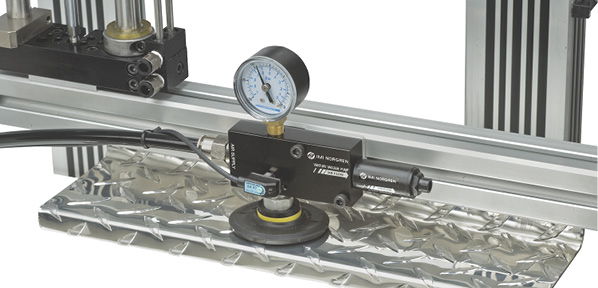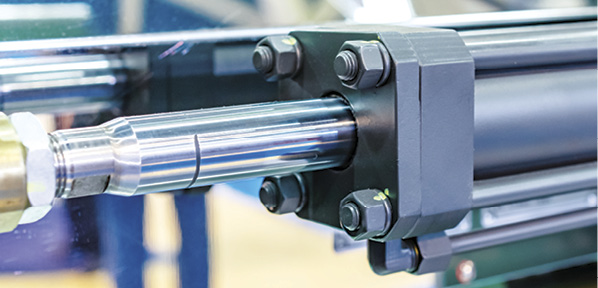How to Protect Pneumatic Rotary Actuators
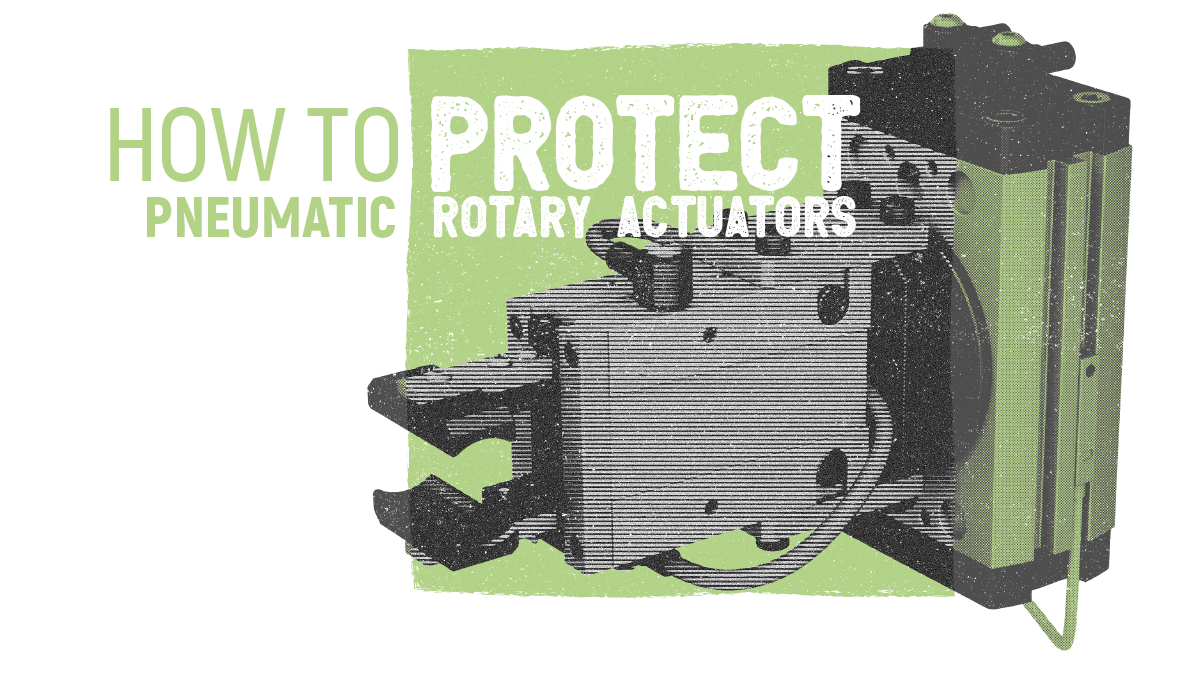
By Michelle Anastasio-Festi, Marketing Director, Rotomation.
Pneumatic rotary actuators are crucial in modern industrial applications, offering reliable and precise movement that drives automation across various sectors. From manufacturing to mining, these devices are indispensable for tasks requiring rotational motion. However, the environments in which these actuators operate can present significant challenges, such as extreme temperatures, corrosive substances, and elevated levels of dust and debris. Protecting pneumatic rotary actuators from these conditions is essential to maintain their performance and longevity. This article explores the common challenges these actuators face in harsh environments and provides protection strategies.
Introduction to Pneumatic Rotary Actuators and Their Applications
Pneumatic rotary actuators convert compressed air into rotational motion, making them an essential component in various industrial processes. They are commonly used in applications requiring precise rotary motion, such as valve automation, material handling, and assembly line operations. These actuators offer several advantages, including high torque output, quick response times, and simple integration with existing pneumatic systems.
Key Applications
Pneumatic rotary actuators are widely used to automate valve operation in industries such as oil and gas, chemical processing, and water treatment. They provide the necessary torque to open and close valves quickly and accurately. In manufacturing and warehouse environments, these actuators are used to drive conveyor diverters, box erectors, pick and place operations, and other material handling equipment. Pneumatic rotary actuators are essential in assembly line operations to position components for welding, inspection, or fastening.
Common Challenges Faced in Harsh Environments
While pneumatic rotary actuators are designed to withstand various operating conditions, harsh environments pose significant challenges that affect their performance and durability. Understanding these challenges is the first step in developing effective protection strategies.
Extreme Temperatures
Pneumatic rotary actuators often operate in environments with extreme temperatures, ranging from cold to scorching heat. These temperature variations can affect the materials and components within the actuator, leading to issues. This includes elevated temperatures causing seals to expand and lose their effectiveness, while low temperatures can make them brittle and prone to cracking. Additionally, extreme heat can cause lubricants to break down, decreasing their ability to reduce friction and wear.
Corrosive Substances
In industries such as food processing, actuators are exposed to caustic cleaning material to wash down the equipment that can damage their components. Corrosion can lead to pitting, rusting, and weakening of the actuator’s components, compromising its performance. Corrosive chemicals can attack the lubricants, metal surfaces, and seals of the actuator, leading to premature failure. In marine environments, saltwater can cause rapid corrosion of metal components, if they are not adequately protected.
Dust and Debris
Dust and debris are common in many industrial environments, and they can infiltrate the internal components of pneumatic rotary actuators. Dust interferes with the lubricants inside the actuator, reducing the life of seals and sliding components. Particles can block the airflow and impede the actuator’s movement, affecting its performance by causing blockages.
Vibration and Shock:
Strategies for Protecting Pneumatic Rotary Actuators
Heavy machinery and equipment often generate significant levels of vibration and shock, which can impact the performance of pneumatic rotary actuators. Excessive shock loads can fracture even high-strength alloy components such as gear teeth. Continuous overload or vibration can lead to fatigue failures. Shock and vibration can loosen connections and fittings, leading to air leaks and reduced efficiency. To ensure the reliable performance and longevity of pneumatic rotary actuators in harsh environments, it is essential to implement effective protection measures. The strategies detailed below can help mitigate the challenges discussed above.
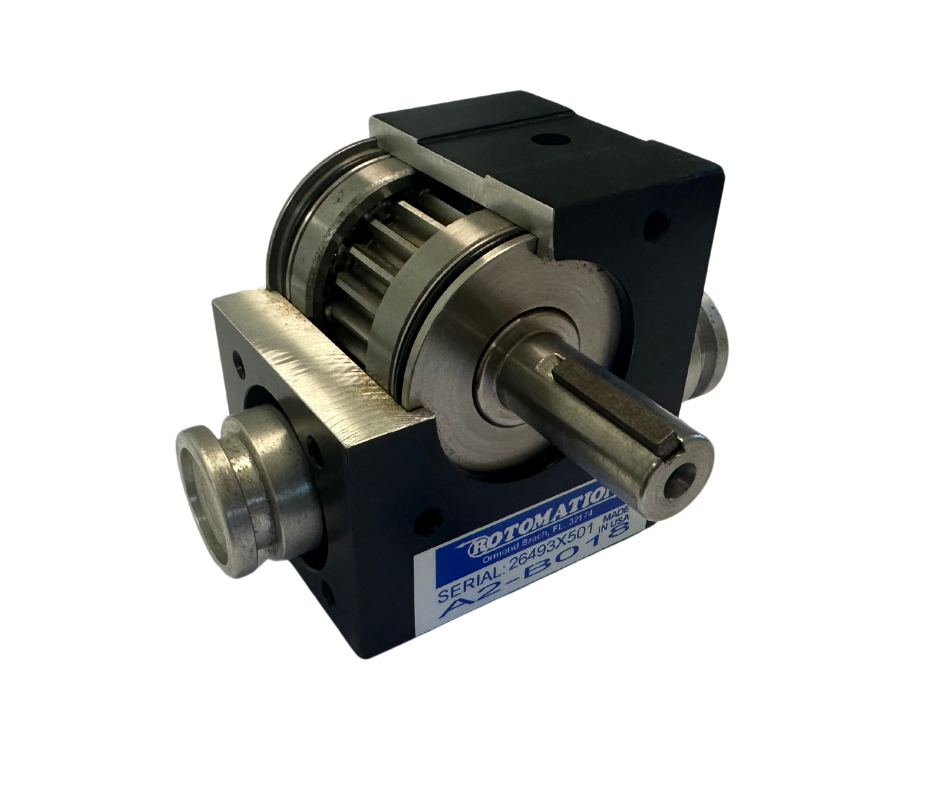
Washdown Protection

Custom Material Actuator in Stainless Steel
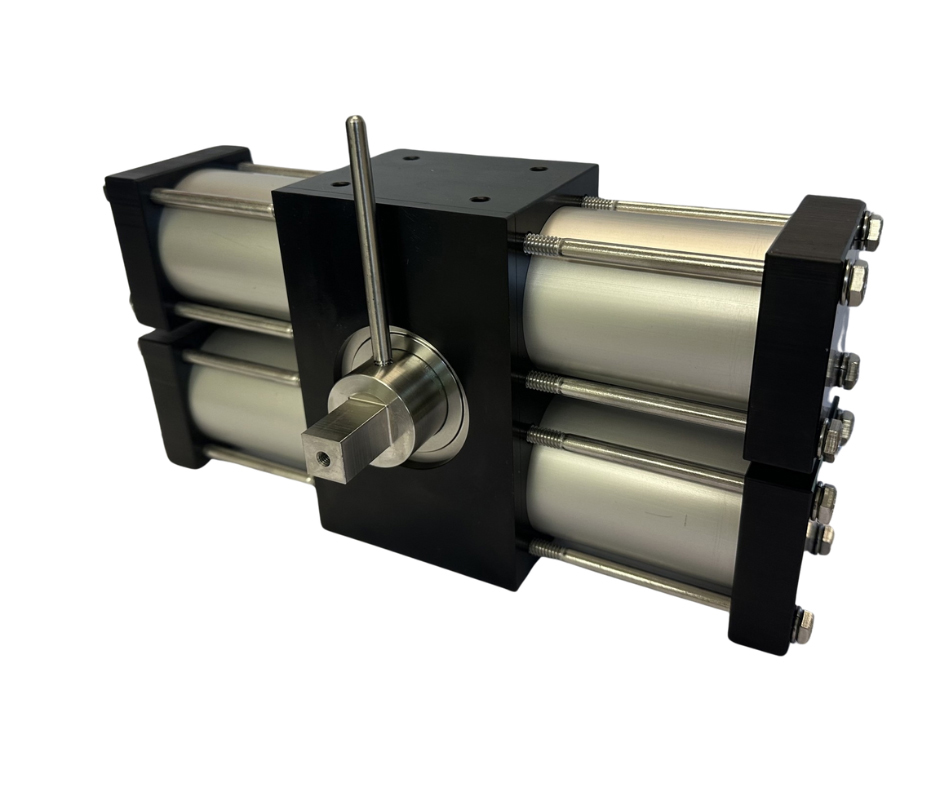
Compact Valve Actuator Made with Hard-anodized Aluminum and 316 Stainless Steel components
Selecting the Right Materials
It is crucial to choose actuators made with materials that can withstand the specific conditions of the operating environment. To ensure an adequate lifetime, use materials such as stainless steel, anodized aluminum, or specially treated metals that resist corrosion and chemical exposure. It’s recommended to configure the actuator to include materials and components that can withstand extreme temperatures without degrading, such as high-temperature seals and lubricants. Some manufacturers offer actuators with features that allow for thorough cleaning without compromising their integrity. Washdown-protected actuators incorporate highly effective shaft seals, sealed housing, and corrosion-resistant materials.
Implementing Protective Coatings
Applying protective treatments to the actuator’s external and internal components can provide an additional layer of defense against harsh conditions. Leveraging nickel, chrome, or zinc plating, epoxy, or ceramic can protect metal surfaces from corrosion caused by chemicals and saltwater. Use of metal surface treatments is also useful; this includes black nitride, hard anodizing, salt bath treatments, or PEO.
Using Sealed Enclosures
If the actuator cannot be made to withstand the extreme environment, it may be possible to house it in a sealed enclosure to protect it from dust, debris, contaminants, and moisture. Ensure that the enclosure is adequately vented to prevent pressure build-up. The enclosure must also incorporate a rotary seal to allow the actuator shaft to project without allowing the entrance of contaminants.
Regular Maintenance and Inspection
Consistent maintenance and inspection are essential to identify and address potential issues before they lead to actuator failure. Implement a preventive maintenance program inclusive of regular visual inspections to check for signs of wear, corrosion, and damage with attention to seals, fittings, and connections. It’s vital to ensure that the actuator is adequately lubricated to reduce friction and wear. Use lubricants that are suitable for operating conditions. Furthermore, the actuator must be clean and free from dust and debris. Use appropriate cleaning methods and solutions to avoid damaging the components.
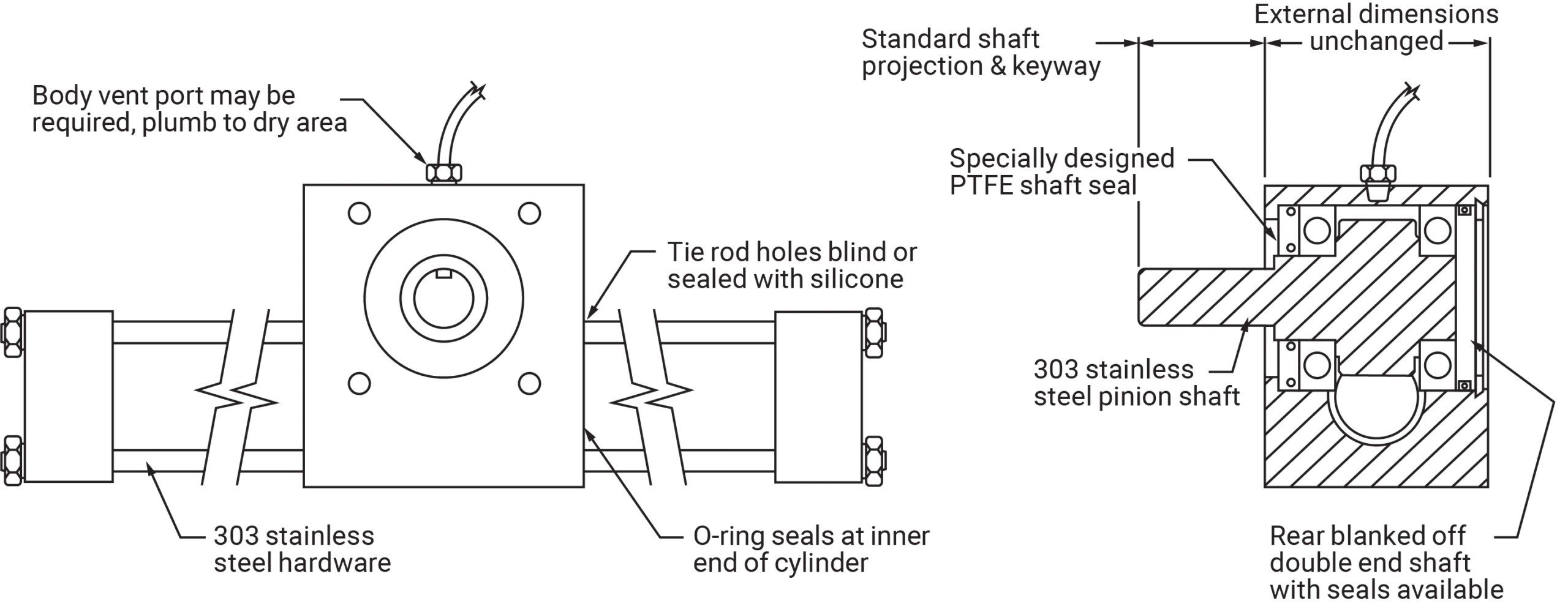
Cutaway of A2 Actuator with Washdown Protection Option
Avoiding Damage from Shock Loading Damage Prevention
Avoiding damage from shock loading is a multi-step process that starts during the project’s design stages. Utilizing weight-saving measures including lightweight materials and efficient design involves the following:
- Keep the mass of rotating elements as close to the center of rotation as possible. Remove unnecessary structural mass, such as tables.
- Select an actuator of adequate displacement, proportional to the inertia and speed of the load.
- Configure the actuator with shock-reducing features, e.g. pneumatic cushions, bumpers, or shock absorbers.
- Carefully set up and tune the system. Use meter-out flow control valves to control the speed of the actuator, making it go only as fast as necessary to achieve target production.
- Apply full-system air pressure to maximize acceleration.
Installing external shock absorbers is essential, as these act directly on the load rather than being incorporated into the actuator. This allows higher speed and lower force shocks, which are more efficient. It also puts the shocks where they can be observed and replaced at the end of life.
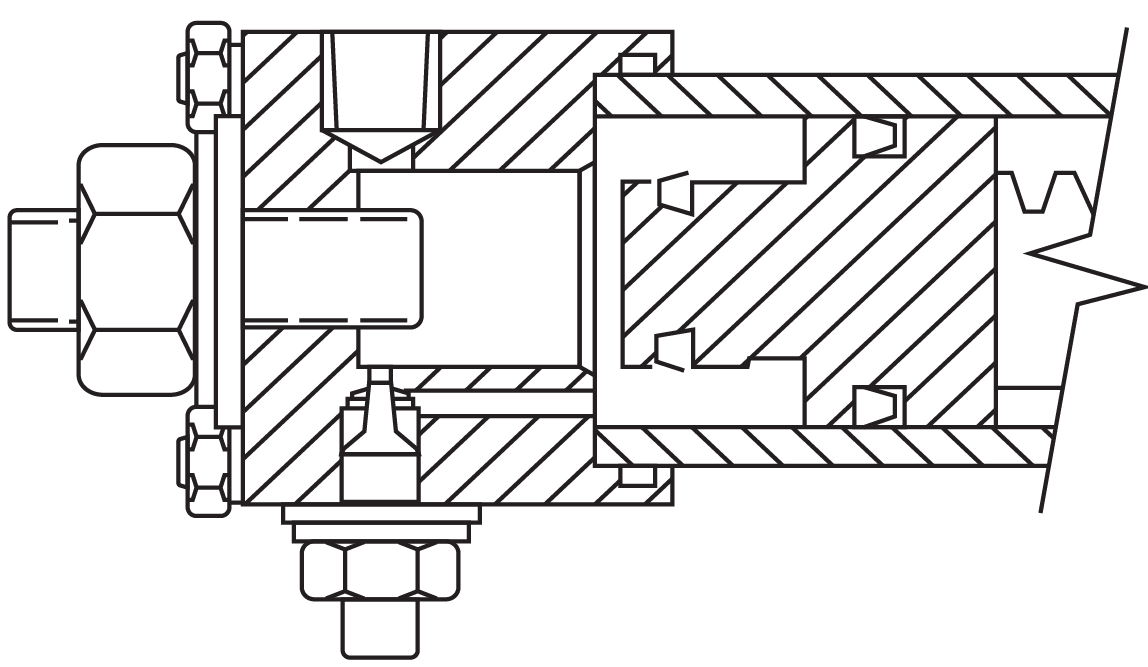
Adjuster and Cushion Combined adjuster and cushion for single rack actuators or steppers. Installed separately, cushion on top rack, in dual rack units. Stroke reduction also reduces cushion action.
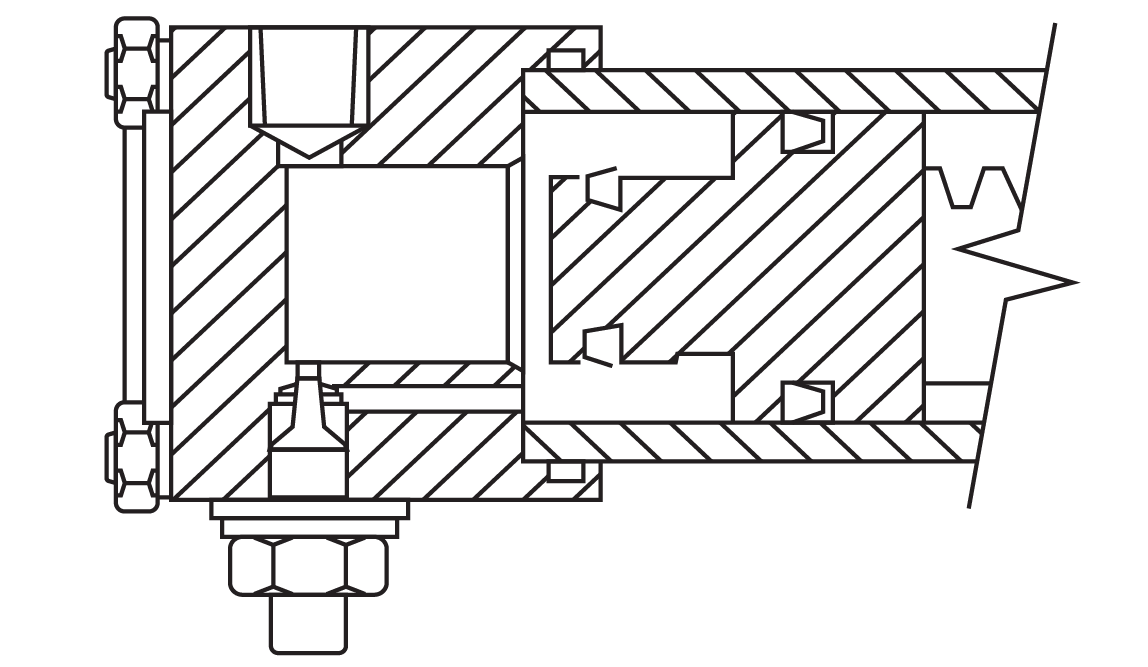
Cushion A reversed U-cup on the auxilary piston closes the free passage to the port, forces exhaust through the control needle valve over last 30° of roation. For return, pressure folds U-cup down, allows full pressure and flow to piston
Monitoring and Diagnostics
Implementing monitoring and diagnostic tools can help identify potential issues before they lead to actuator failure. Consider utilizing sensors to monitor the condition of the actuator, such as temperature, pressure, and vibration levels. Implement a system to alert maintenance personnel of any abnormal conditions. Call on observation and/or PLC monitoring measures to ensure that the target velocity is being maintained. Flow control and pressure settings may require periodic checking and adjustment. In addition, predictive maintenance techniques may be used to analyze data from condition monitoring sensors and predict when maintenance is required. This approach can help prevent unexpected failures and reduce downtime.
Real-World Example & Case Study
Valve Actuator Solution for Deep-Sea Oil Rig:
To illustrate the effectiveness of these protection strategies, let’s explore a real-world example and case study of a pneumatic rotary actuator operating in harsh environments.
Challenge:
A leading supplier of control systems for the energy industry was tasked with modernizing a deep-sea oil rig’s hydraulic well safety equipment. The existing manual control system needed to be replaced with an automated system that could operate valves remotely and efficiently. The primary challenge was finding a compact, reliable, and corrosion-resistant valve actuator that could interface with specialized, high-pressure hydraulic valves.
Solution:
Rotomation, a leading manufacturer of pneumatic rotary actuators, was approached to provide a solution. By utilizing one of its three-position pneumatic rotary actuators, Rotomation was able to create a custom-engineered solution that met the specific requirements of the control system.
Compact Design: The actuator was designed so the valve could be attached directly to it, eliminating bulky couplings and brackets.
Corrosion Resistance: To ensure long-term reliability in the harsh marine environment, the actuator was constructed using hard-anodized aluminum and 316 stainless steel components.
Manual Override: A robust handle and visual indicator were included to allow for manual operation in case of power failure or emergency.
Benefits:
Improved Efficiency: The automated system, powered by Rotomation’s valve actuators, significantly enhanced the efficiency of the oil rig’s operations.
Enhanced Safety: The reliable and corrosion-resistant actuators contributed to improved safety by ensuring the proper functioning of the hydraulic well safety systems in case of emergency.
Part Reduction: The number of valves was cut in half by going from pairs of two-position valves to single, three-position valves
Case Study Closing Summary:
Rotomation’s valve actuator solution provided a critical component in the modernization of the deep-sea oil rig’s hydraulic well safety equipment. The actuator’s compact design, corrosion resistance, and manual override feature made it an ideal choice for this demanding application.
Conclusion:
Businesses can learn how to operate pneumatic rotary actuators successfully in harsh environments by carefully selecting and configuring the actuator to match the load and including appropriate materials and features. Additional protective measures, along with careful setup, monitoring, and maintenance will ensure long life and alleviate the risk of unexpected failures.


